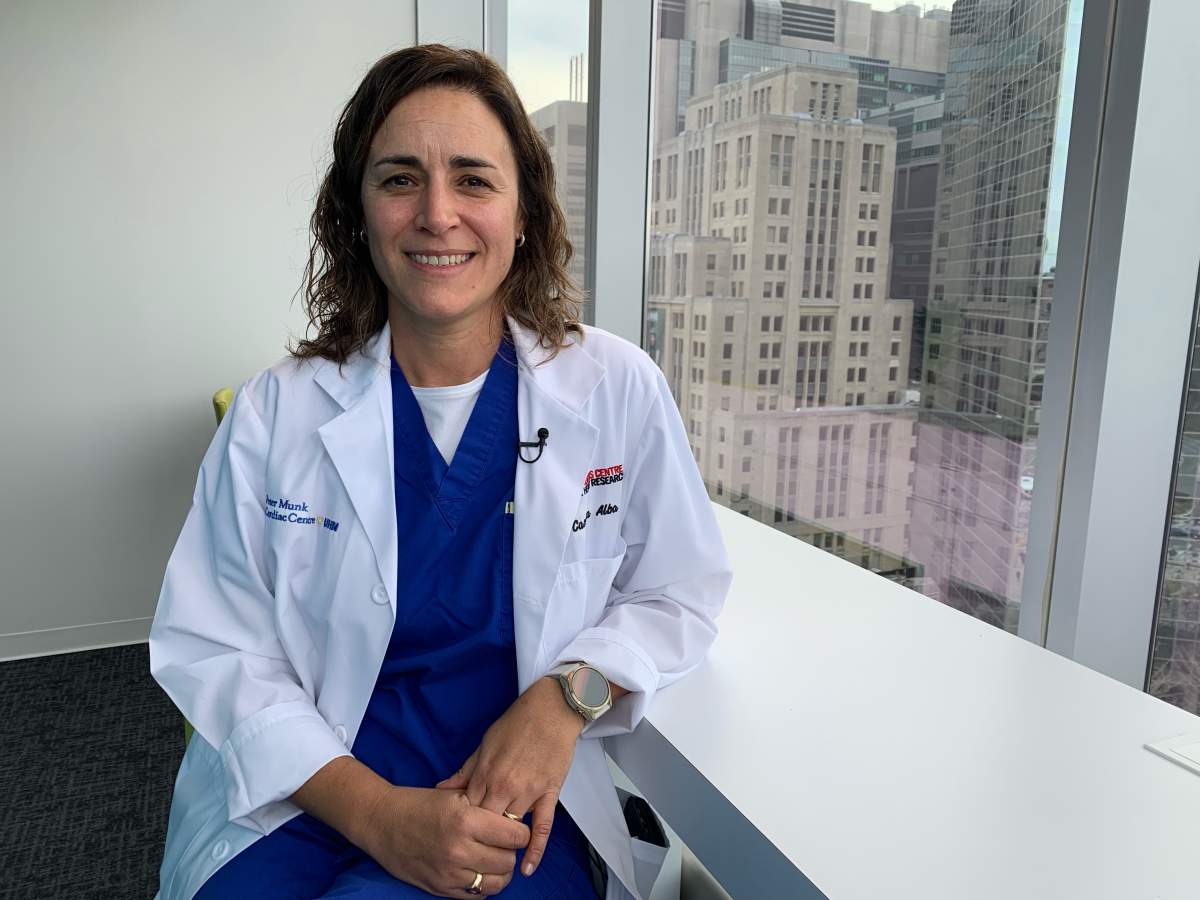Amidst the surging rates of heart failure across Canada, experts say the urgency for accurate prognostic tools has never been more needed. Yet, within this challenging landscape, promise is emerging from the realm of artificial intelligence (AI).

Researchers at the Peter Munk Cardiac Centre in Toronto have unveiled SEATTLE HF, an AI system demonstrating precision in forecasting a patient’s heart health compared to physicians.
“We recognize that we are limited in how much information we can combine at once,” explained Dr. Carolina Alba, staff cardiologist at Peter Munk Cardiac Centre.
“Of course, (doctors) are very well trained and we have a lot of experience seeing thousands of patients with specific conditions, but we know that our brain is limited. Now we can rely on the use of predictive models.”
Alba told Global News that the goal of the AI tool is not to replace doctors, but only to assist them in making a better judgment for a patient, whether it involves recommending heart surgery, adjusting medication dosage or exploring alternative treatments.
“Right now we rely on family doctors’ judgments or our judgment to make these decisions. We know that we are a little bit off. So by having these models, I think that we can allocate resources much better and we can make sure that we can help everybody who would have the most benefit from this type of care,” she said.
Around 750,000 Canadians live with heart failure, a chronic condition caused by the heart not functioning as it should or a problem with its structure, according to the Heart and Stroke Foundation. And 100,000 are diagnosed with this incurable disease each year. It is also a growing problem not just in Canada, but across the world.
Although there is no cure for heart failure, early diagnosis and the right treatment plan can extend life expectancy and improve quality of life.
How does the AI tool work?
To test the effectiveness of using AI in treating heart disease, Alba and a team of researchers gathered data from 11 heart clinics across Canada and monitored patients for one year. They then compared predictions made by family physicians and cardiologists with those generated by computer models.

Get weekly health news
The comparison showed that the AI was more precise than physicians who tended to overestimate the risk to their patients.
“In general, physicians tend to overestimate risk. I think that’s human nature. We always prepare for the worst, and we always try to minimize the risk or try to maximize the best outcome when something bad is going to happen,” Alba said.
“Using these mathematical models that do not have that emotional experience attached, we can use this model to help us calibrate our assessment of risk. And with that, having a better discussion with the patient of what could happen in reality and not just based on our experience, emotions and judgment.”
By inputting patient characteristics, blood work, medical history, and the presence of comorbidities into the AI tool, doctors receive predictions, such as the patient’s risk of mortality within a year. Armed with this information, doctors can make more informed decisions regarding patient care.
For example, the doctor can assess if the patient needs a transplant, a mechanical heart or medication.
“If our patient is low risk, it may also advise a patient not to use a lot of medications that may provide very little benefit and may expose the patients to unnecessary risk or cost,” she said.
AI can help relieve the system
Another advantage of using the AI tool is to help alleviate the strain on an already overstretched health-care system.
For instance, Patrice Lindsay, with the Heart & Stroke Foundation of Canada, highlighted how this technology can aid in managing transplant waitlists.
“Combining our own observations with artificial intelligence, we can predict when people’s health is starting to decline faster and help get them more urgent care,” she told Global News.
“Because with heart transplants, the reality is some people will not make it to their surgery, they will pass away while they’re still waiting. So if we can encourage some of these changes earlier, we can adjust the waiting list and the times waiting to help some of these people get treatment faster.”
She emphasized that AI not only is “saving lives” but also contributes to patients living longer, healthier lives.

Alba echoed this sentiment, emphasizing that many heart clinics in the country are at capacity, leaving numerous Canadians with heart failure waiting in line for crucial care.
Yet, leveraging the AI tool can ensure that specialized clinics cater to high-risk patients, while low-risk cases are managed within family practice — easing the burden on the system, she said.
What's next with AI?
Although AI tools have proven useful in assisting physicians in better serving their patients, Vallijah Subasri, an AI scientist at Peter Munk Cardiac Centre, highlighted the need for further integration into hospitals.
“There’s a lot of changes that need to be made at an infrastructure level for hospitals to really catch up to some of these tech companies and other industries,” she said. “But I think now the conversations are finally being had and the value of AI is really being seen.”
She said the next step with tools like SEATTLE HF at the Peter Munk Cardiac Centre is trying to put them in clinics, train family doctors, and “use really in a safe and responsible manner.”

Alba explained that although the models are accurate, they still have not been tested in clinical practice.
“It’s like more or less a having a knowing that we have an effective therapy that we just discovered in the lab that can help patients to cure a disease,” she said.
“Now we’re at this stage where we have to test the use of these predictive models to make sure we are helping patients.”
— with files from Global News’ Katherine Ward










Comments